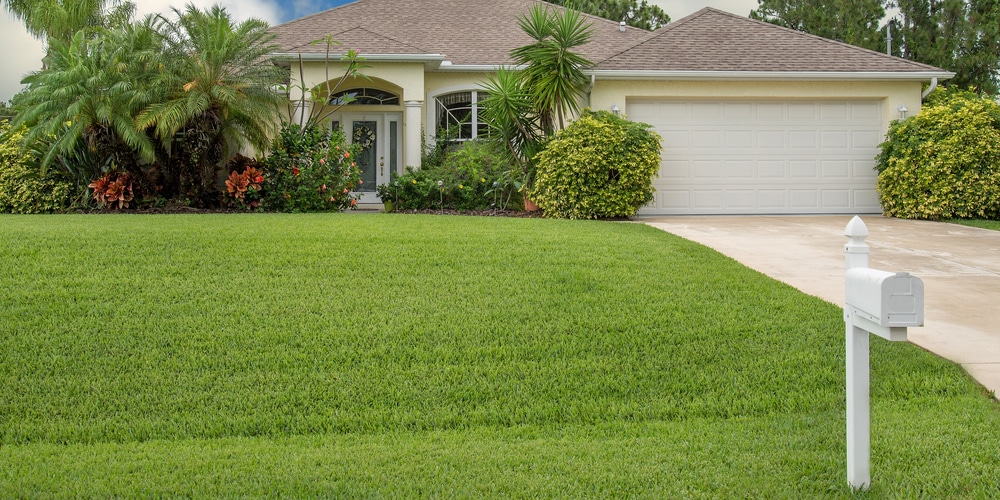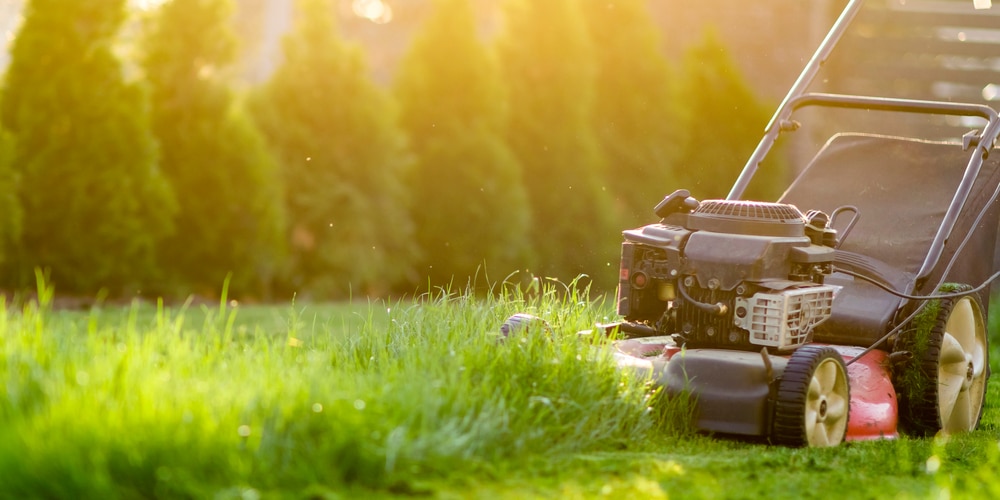St Augustine grass comes in many varieties. And the most popular ones are BitterBlue, CitraBlue, Floratam, Palmetto, ProVista, Raleigh, and Seville. Of course, each one is slightly different and can suit different needs. Which is the best St Augustine grass variety? Palmetto vs st augustine grass.
Without counting the classic St Augustine, every variation has at least one perk that makes it stand out. For example, ProVista offers better weed control.
Instead, Raleigh is arguably the most cold-hardy. And Palmetto has better drought and wear tolerance. They all require a good amount of maintenance. But the best one for your lawn is the one that best adapts to the local climate and soil conditions.
Palmetto VS St Augustine Grass Varieties With Different Characteristics

When you compare the Palmetto St Augustine to the other varieties, the first thing that comes to mind is the blade quality and density.
Palmetto has the finest blades and creates a more dense lawn than any other St Augustine variety. So, most homeowners associate the standard St Augustine grass with it. But in reality, Palmetto has its pros and cons.
Shade tolerance is not a problem with the Palmetto cultivar. In fact, Palmetto can withstand four hours of direct sunlight and filtered light for the rest of the day.
Of course, it will not grow well under the canopy of 50-year shade trees. But as long as it receives at least 1 inch of water per week and some direct light, it will try its best to thrive.
Palmetto VS BitterBlue
BitterBlue has fine blades and a coarse, dense texture with a blue-green color. Like Palmetto, it has good shade and cold tolerance. You can use it in residential areas, and no one might notice the difference. But if you walk barefoot on it, you may find it a bit rougher.
Palmetto has a soft texture. But if you search for some grass to grow in the shade, BitterBlue will do.
In Florida, BitterBlue is an alternative to another local cultivar, Floratine.
Palmetto VS CitraBlue
The University of Florida created CitraBlue as a suitable replacement for Foratam grass infected by the Lethal Viral Necrosis. But it has a more horizontal growth than Foratam and Palmetto.
Released in 2018, this cultivar has excellent disease resistance, good shade and drought tolerance, and striking blue-green color. So far, CitraBlue has done well, but it may lack the time-tested quality that Palmetto provides.
If you live in a warm-season grass zone, both are good choices.
Palmetto VS Floratam
Until LVN hit in the last decade, Floratam has been the most produced and used St Augustine cultivar in Florida. You can still find it. But if the LVN virus keeps spreading, it might not be a good investment.
Compared to Palmetto, Floratam cannot stand low temperatures. So, it only thrives in hot USDA zones (8 through 11).
Palmetto is more versatile and can survive in USDA zone 7.
Palmetto VS ProVista
ProVista has a deep dark green color—and if you look at it with polarized sunglasses, you can definitely spot a dark blue tinge as well. It can stand out against a Palmetto yard. So, if you are looking for a darker green option that is also a low mow type, ProVista is for you.
You should not cut Palmetto St Augustine grass shorter than 2.5 inches. And ProVista can survive a mowing height of 3 inches. So, it is another valuable low-maintenance grass you should consider.
ProVista can handle Glyphosate, but it is still susceptible to all diseases that can attack Palmetto and other varieties.
Palmetto VS Raleigh
Raleigh has been one of the most sold varieties in the last decade because it is the most forgiving St Augustine cultivar.
This cold-hardy variation has larger blades than Palmetto.
You can think of it as the perfect cross between all variants. From this point of view, it performs well, but it is not great at anything in particular. Meaning that it has good shade tolerance but is not as good as Palmetto. Likewise, it does not offer better weed control like ProVista. And so on.
Palmetto VS Seville
Seville is a salt-tolerant dwarf cultivar. Chinch bugs love it, and they tend to destroy it. Thatching can also be another issue. But its lovely, fine blades have their charm.
Like Palmetto, you can mow Seville St Augustine grass as low as 2.5 inches. To be precise, you can go even lower, but no lower than 2 inches.
Seville is a heat-loving cultivar.
Related Article: Zoysia Grass Vs Fescue
